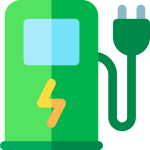
One of the most compelling arguments for switching to an Electric Vehicle (EV) in Australia is not the fuel saving—which is significant—but the dramatic reduction in ongoing maintenance and servicing costs. While the initial purchase price of an EV might be higher than a comparable Internal Combustion Engine (ICE) vehicle, the savings from the garage floor quickly compound, often erasing that difference over a few years of ownership.
The core reason for this financial advantage is elegantly simple: complexity. An EV is mechanically far less complex than a petrol car. This article breaks down the engineering differences, quantifies the savings, and addresses the specific maintenance points that do require attention, namely tyres and brakes.
Key Takeaway: Less complexity means fewer service costs, longer service intervals, and a substantial long-term saving over a petrol car. The simplicity of the electric powertrain is the key to cheaper, easier ownership.
The Engine Room Revolution: Less is More
The heart of a petrol car is a volatile, high-pressure machine that requires hundreds of moving, reciprocating, and igniting parts to convert liquid fuel into motion. The EV powertrain, by contrast, is a model of engineering efficiency.
What’s Missing in an EV?
The mechanical components an EV doesn’t have are the biggest contributors to its lower maintenance costs:
- No Oil Changes: The electric motor uses a simple reduction gear oil (if any) that rarely, if ever, needs replacement. There is no engine oil that needs to be regularly drained, replaced, and filtered. This instantly eliminates a major recurring service cost and time drain.
- No Spark Plugs or Ignition System: An electric motor works by magnetic forces, not timed explosions. This eliminates the need for expensive spark plugs, distributor caps, coils, and complex ignition wiring that are prone to wear and failure in petrol engines.
- No Exhaust System or Muffler: EVs produce no tailpipe emissions, making the entire exhaust system—from the manifold to the catalytic converter and muffler—obsolete. These components in an ICE vehicle are frequently damaged, rusted, or require replacement due to wear and tear.
- No Fuel System Complexity: There are no fuel pumps, fuel filters, injectors, or sophisticated high-pressure fuel lines that need maintenance or replacement, all of which are common failure points in older petrol vehicles.
- No Clutch or Complex Gearbox: Most EVs use a simple single-speed gearbox, eliminating the need for clutch replacements or complex automatic transmission fluid flushes and filter changes.
The result of removing hundreds of moving, heat-stressed parts is fewer things that can break, fewer things that need adjustment, and a significant reduction in labour time during servicing.
Service Intervals and Savings: Quantifying the Difference
This mechanical simplicity translates directly into the service schedule and your bank account.
| Component | ICE Vehicle Maintenance | EV Maintenance | Cost Impact |
|---|---|---|---|
| Engine Oil & Filters | Required every 10,000–15,000 km | Not required | Major Annual Saving |
| Spark Plugs | Required every 30,000–80,000 km | Not required | Significant Saving |
| Coolant & Fluids | Engine coolant flush every 50,000–100,000 km, various transmission fluids | Simple battery coolant check (very long life), brake fluid only | Longer Intervals, Lower Cost |
| Belts & Hoses | Serpentine belt, timing belt replacements | Fewer accessory belts (power steering pump, AC compressor are often electric) | Near Elimination of Cost |
| Service Intervals | Often yearly or every 15,000 km | Often every 2 years or 30,000 km | Less Frequent Servicing |
A typical comprehensive service for a mid-range petrol car in Australia can easily cost \$400 to \$800 annually, often more if major items like spark plugs, belts, or transmission fluid are due. EV services, which primarily involve diagnostics, checks, and cabin filter replacements, are often reported as being 50% to 70% cheaper and far less frequent.
Over a decade of ownership, the accumulated difference in service costs alone can amount to thousands of dollars, substantially offsetting the initial purchase premium.
Focus on Brakes: How Regeneration Saves Money
While all cars have a braking system, the way EVs use them fundamentally changes their wear rate and maintenance cycle.
- Regenerative Braking is Key: EVs use their electric motor to slow the car down. When the driver lifts their foot off the accelerator (or gently presses the brake pedal), the motor reverses its function, slowing the car and simultaneously recovering kinetic energy to send back to the battery. This is called regenerative braking.
- Massive Reduction in Wear: In most daily driving scenarios, the friction brakes (pads and rotors) are barely used. They are only engaged for hard, emergency stops or the final few km/h before coming to a complete stop.
- Longevity: This regenerative capability means that EV brake pads and rotors can last three to five times longer than those on a conventional car. Where a petrol car might need new pads every 40,000 km and new rotors every 80,000 km, many EV owners are reporting pad life extending beyond 150,000 km.
- Maintenance: The main maintenance for EV brakes is simply an annual inspection and cleaning to ensure the less-used components do not seize up due to inactivity.
Focus on Tyres: The EV’s Biggest Maintenance Expenditure
The one area where an EV might incur higher running costs compared to an ICE equivalent is tyre wear. This is due to two primary factors:
- Weight: EVs are inherently heavier than petrol cars of the same size due to the dense weight of the battery pack. This increased weight puts more stress and heat on the tyres, accelerating wear.
- Instant Torque: Electric motors deliver instant and high torque from a standstill. Drivers often enjoy the rapid acceleration, but this powerful, immediate force is demanding on the tyre tread, leading to faster degradation if driven aggressively.
- EV-Specific Tyres: To counter this, many manufacturers now fit EV-specific tyres. These tyres feature:
- Higher Load Ratings: To handle the vehicle’s weight.
- Low Rolling Resistance: To improve efficiency and range.
- Noise Reduction Foam: To complement the quiet electric motor.
- The Cost: While EV tyres are more durable, they can sometimes be more expensive to replace than standard ICE tyres.
The Bottom Line: While the cost of new tyres may be higher and the replacement interval potentially shorter than a light petrol car, this is still heavily outweighed by the significant savings on powertrain servicing and brake components.
Beyond the Garage: The Total Cost of Ownership
The true measure of affordability isn’t the upfront price or even the service cost in isolation, but the Total Cost of Ownership (TCO). When you combine the advantages of an EV:
- Substantially Cheaper “Fuel” (Electricity): Charging at home overnight is far cheaper than petrol.
- Minimal Powertrain Maintenance: Removing all oil, filters, and spark plugs.
- Extended Brake Life: Thanks to regenerative braking.
These factors create a cost curve that rapidly favours the EV. Even with the potentially increased tyre expenditure, the EV delivers a more predictable, budget-friendly, and simpler ownership experience. The maintenance is largely relegated to “checking the boxes” rather than expensive component replacements, allowing owners to spend more time enjoying the drive and less time worrying about the next big service bill.
About EV Evolution
EV Evolution is the leading online platform dedicated to Australian electric vehicle owners and enthusiasts. We foster a vibrant community, delivering essential EV news and insights, and enhancing user engagement through our innovative, AI-powered chatbot for dynamic discussions. Our mission is to empower Australian electric vehicle owners and enthusiasts by fostering a vibrant, AI-driven online community that connects, informs, and advances the nation’s electric vehicle landscape.




